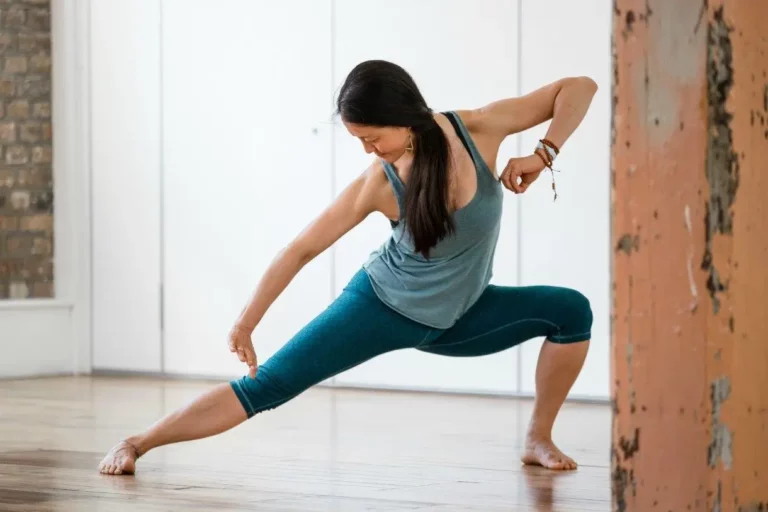This week, we are featuring yoga nidra for ‘everyone try yoga’. Amy Bisazza explains the significant of practising yoga nidra with the full moon and gong meditation. Experience it for yourself at Amy’s upcoming workshop on the 13th January in Chelsea.
The first full moon of the year in Cancer offers us an opportunity to create a strong foundation for the direction we wish to move in for 2017. The new and full moon have long been recognised and celebrated as auspicious times of the month in yogic, Buddhist, farming and gardening traditions. Every full moon is different and speaks a unique language to each one of us, yet we can all harness the energy of the full moon by engaging in meditative practice.
When the full moon blossoms: emotions, desires and intense feelings rise to the surface to be acknowledged and understood. It is at these times that a neutral, relaxed and meditative mind is essential in helping to navigate through internal conflicts and tensions, highlighted by the gravitational energy of the moon. When we carve out a time to meditate and relax during the new and full moons, we are able to transform ‘emotion into devotion’; by calling upon our higher self for direction and clarity. We are also aligning ourselves more with nature by quietly revering the rhythmical lunar cycles.
During my full moon gong meditation and yoga nidra workshops, a seated meditation is practised, which includes stretching and movement, mudra, pranayama and mantra. This is to help release muscular and postural tensions in the physical body as well as releasing mental and emotional tensions. This enhances receptivity during the yoga nidra and gong relaxation and therefore, more benefits can be reaped.
The various stages of yoga Nidra continue to release physical, mental and emotional tensions. The koshas (layers or sheaths of existence) are experienced, awakened and strengthened during Yoga Nidra and the Gong relaxation. This means that there is a gradual withdrawal of senses, as consciousness moves from the grossest level to a more subtle level. In this receptive state, we are able to touch the subconscious mind and ultimately initiate change and transformation in the most profound ways.
When the mind is calm and relaxed, it becomes responsive and directive to our own suggestions, this is why a (personal) Sankalpa – a positive affirmation – is repeated at the beginning and at the end of the practice with complete faith and reverence. Just as seeds absorb more water at the time of the full moon, so our Sankalpa absorbs more nourishment for growth and manifestation during this time. It is only when we are truly relaxed though that our Sankalpa has the capacity to influence the mind.
During the end stages of the yoga nidra practice, the gong is played. This is where the anandamaya kosha (the bliss body) can be experienced – a total merging and a cessation of the fluctuations of the mind. There is an integration of the hemispheres of the brain, which means the brain can more readily absorb the desired positive change. The Gong continues to elicit the state where the student is neither asleep nor awake, where the brain waves are bordering and moving between alpha and theta so that awareness remains. While the other senses are drawn inwards and quietened, the auditory sense remains intact during both yoga nidra and gong, providing deep relaxation as well as cultivating higher perception, increased memory function and amplified intuition.
Yoga nidra and the gong vibrations initiative a deep relaxation response, balancing sympathetic and parasympathetic nervous activity. As the physical body reaches a state of homeostasis and balance, this affects the subtle and psychic energy bodies that sustain our physical, mental and emotional health. Both the gong and yoga nidra are tools for transformation and stress reduction – as practices that cultivate a deeper awareness that can lead us to self-realisation and understanding the truth of who we are: a merging of the individual consciousness with the universal consciousness.
Swami Satyananda writes, “When a man is under tension, his behaviour is influenced, and when he relaxes, he becomes natural. He knows the reality, the truth. Then, he also knows how to behave, because the knowledge of truth is necessary for right behaviour. And knowledge of truth only comes when you are free from tension.”
When we are truly relaxed, insight, understanding and healing occur within the deepest level of our being. We are no longer a servant to the fluctuations of our thoughts and emotions, but instead masters of our destiny. Amy (Karampal Kaur) initially trained with The Yoga Academy in 2007, as a British Wheel of Yoga accredited Hatha Yoga teacher. She completed the gong training with Don Conreaux in 2011, which inspired her to complete the Level 1 Kundalini Teacher Training with The Karam Kriya School. She is currently completing Level 2. Although she has taught Hatha for many years, her heart resonates most deeply with the lineage of kundalini yoga, which she has been practising since 2000. She is a dedicated teacher and passionate about bringing the benefits of kundalini yoga and gong meditation to all ages and abilities, especially beginners. Her classes are infused with rhythm, devotion and an emphasis on alignment and safety – yet with a little sprinkle of humour! As well as teaching, she writes articles on yoga and wellbeing for Propellernet Consultants that have featured in Psychologies and Sport Shoes Online, plays and performs mantra music and teaches reiki.
Amy (Karampal Kaur) initially trained with The Yoga Academy in 2007, as a British Wheel of Yoga accredited Hatha Yoga teacher. She completed the gong training with Don Conreaux in 2011, which inspired her to complete the Level 1 Kundalini Teacher Training with The Karam Kriya School. She is currently completing Level 2. Although she has taught Hatha for many years, her heart resonates most deeply with the lineage of kundalini yoga, which she has been practising since 2000. She is a dedicated teacher and passionate about bringing the benefits of kundalini yoga and gong meditation to all ages and abilities, especially beginners. Her classes are infused with rhythm, devotion and an emphasis on alignment and safety – yet with a little sprinkle of humour! As well as teaching, she writes articles on yoga and wellbeing for Propellernet Consultants that have featured in Psychologies and Sport Shoes Online, plays and performs mantra music and teaches reiki.










